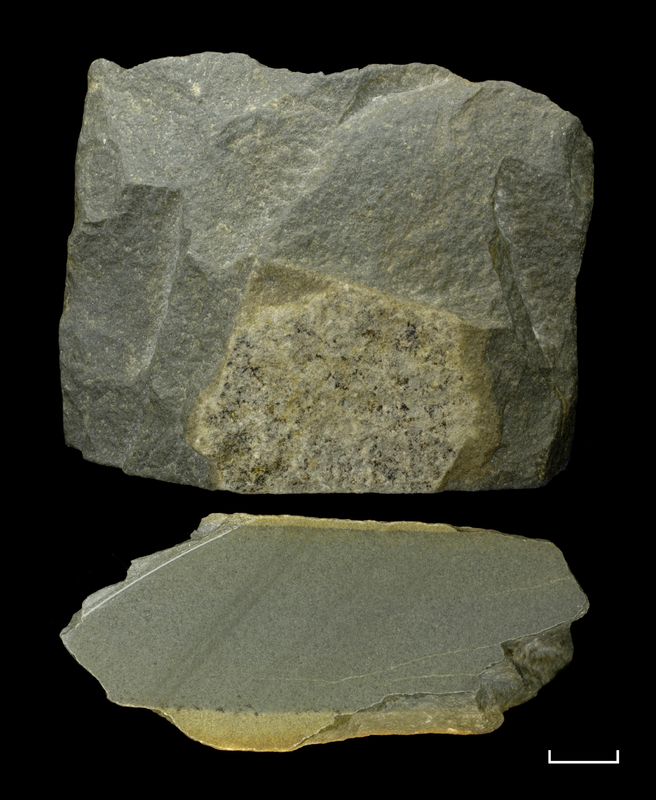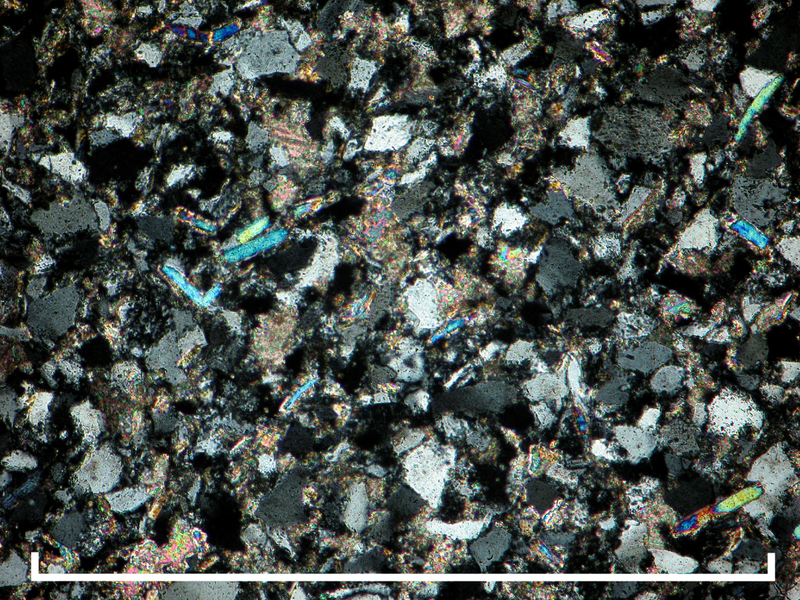- Home
- Rocks
- Type fossils
- Fossil Specimens
- Minerals
- Glossary
- Stratigraphic Chart
- Michel-Levy Chart
- Classification of igneous rocks
- University of Cambridge
- Department of Earth Sciences
- ESC Library
- Moodle
- Sedgwick Museum
- DoITPoMS
- Mindat.org
- Microfossils
- Bryozoans
- Webmineral
- Tree of Life
- CrystalMaker
- Virtual Microscope
L331 Sandstone, wacke
Title
L331
Sandstone, wacke
Subject
Specimen Age
Silurian
Location
Austwick Grit
Austwick, Yorkshire
Austwick, Yorkshire
Description
Hand Specimen
Dark grey rock, mainly fine sand.
Does not react with acid, probably mainly quartz.
Some glints of mica.
Cement reacts with acid, so it is at least partially carbonate.
Band of brown-grey material is due to weathering.
Does not react with acid, probably mainly quartz.
Some glints of mica.
Cement reacts with acid, so it is at least partially carbonate.
Band of brown-grey material is due to weathering.
Thin-section
The thin-sections are only cut from dark grey, unweathered region of the rock. They are best viewed under high magnification.
Sub-angular to sub-rounded quartz grains. Mainly fine sand, with a significant proportion of silt. >15% clay, so this is a wacke.
A few white mica flakes and opaque grains.
The main cement is carbonate, though the grains are also partially cemented by the clay grade grains.
Sub-angular to sub-rounded quartz grains. Mainly fine sand, with a significant proportion of silt. >15% clay, so this is a wacke.
A few white mica flakes and opaque grains.
The main cement is carbonate, though the grains are also partially cemented by the clay grade grains.
Rock History
Wackes are commonly produced by turbidity currents, though we cannot be sure without seeing graded bedding.
Rock Name
sandstone
wacke
wacke
Citation
“L331
Sandstone, wacke,” 1A Collections, accessed April 9, 2024, https://wserv3.esc.cam.ac.uk/p1acollections/items/show/27.
Sandstone, wacke,” 1A Collections, accessed April 9, 2024, https://wserv3.esc.cam.ac.uk/p1acollections/items/show/27.



